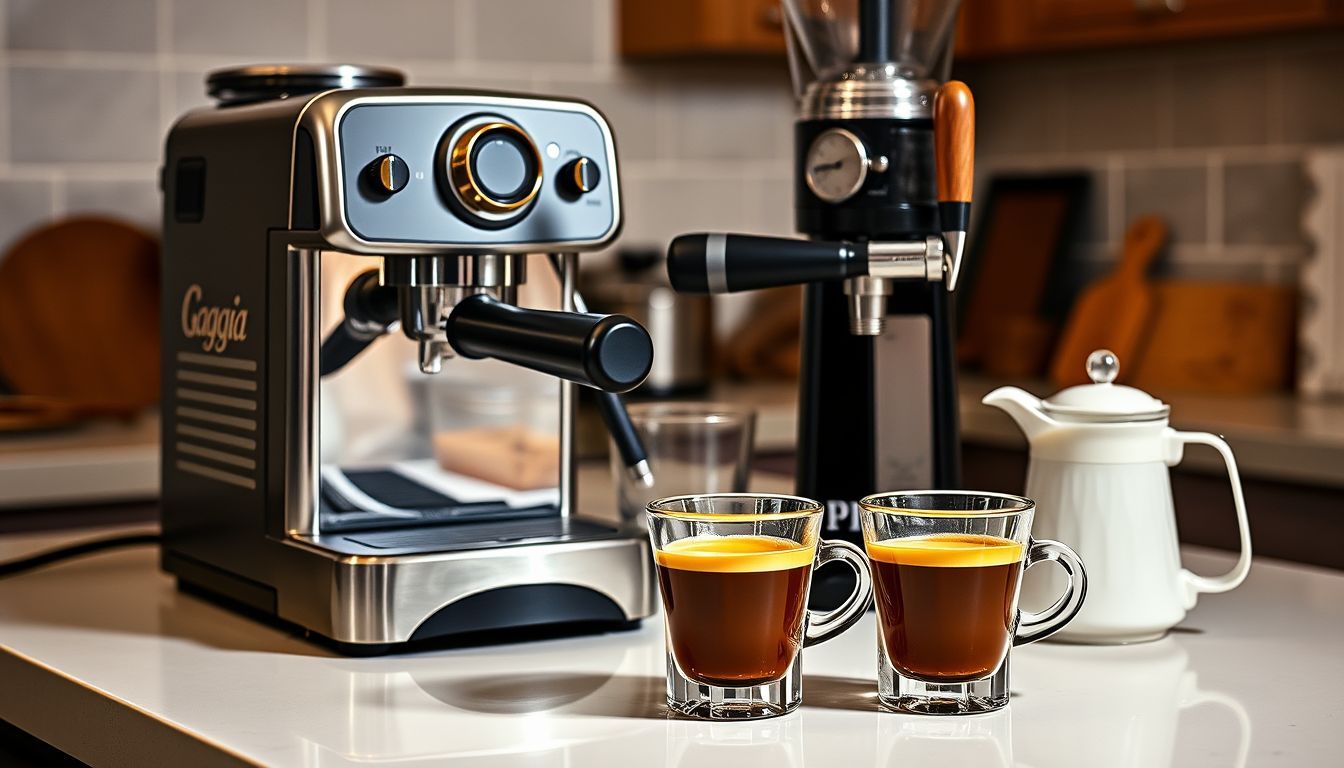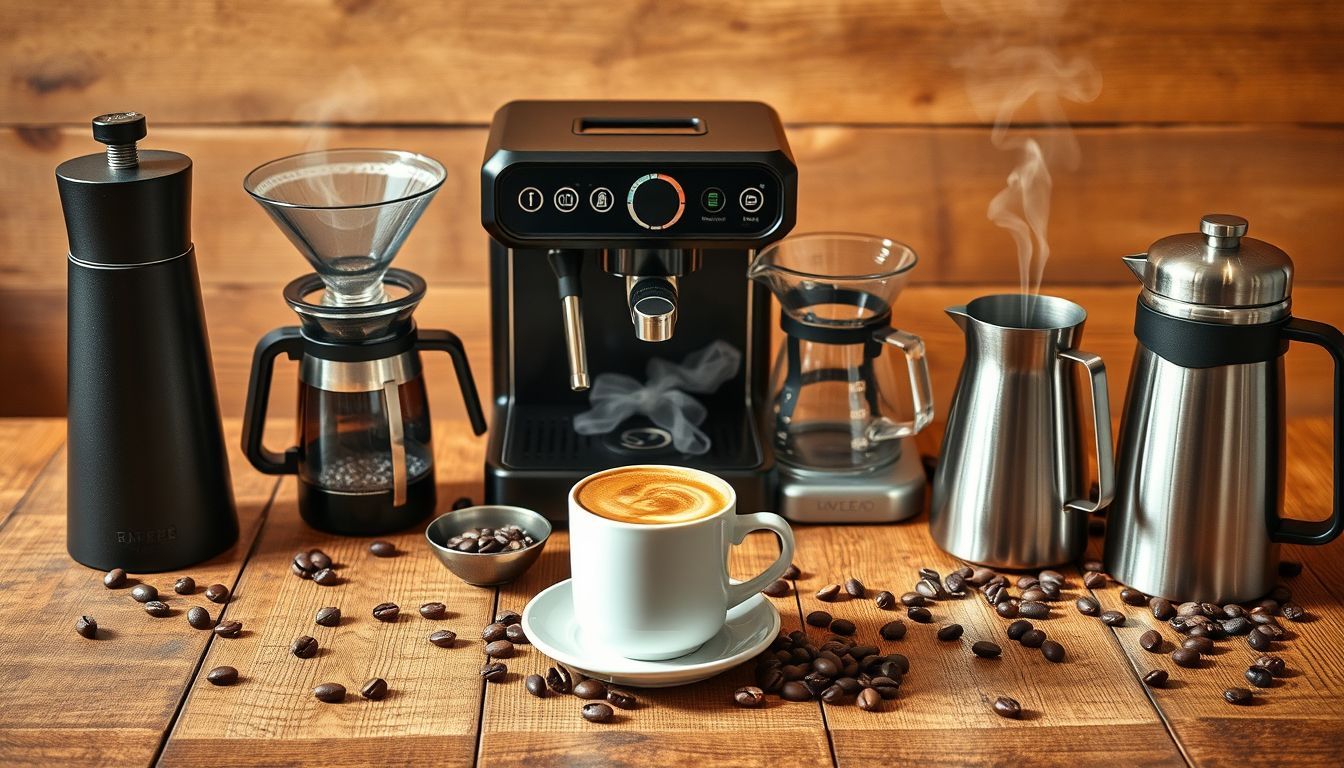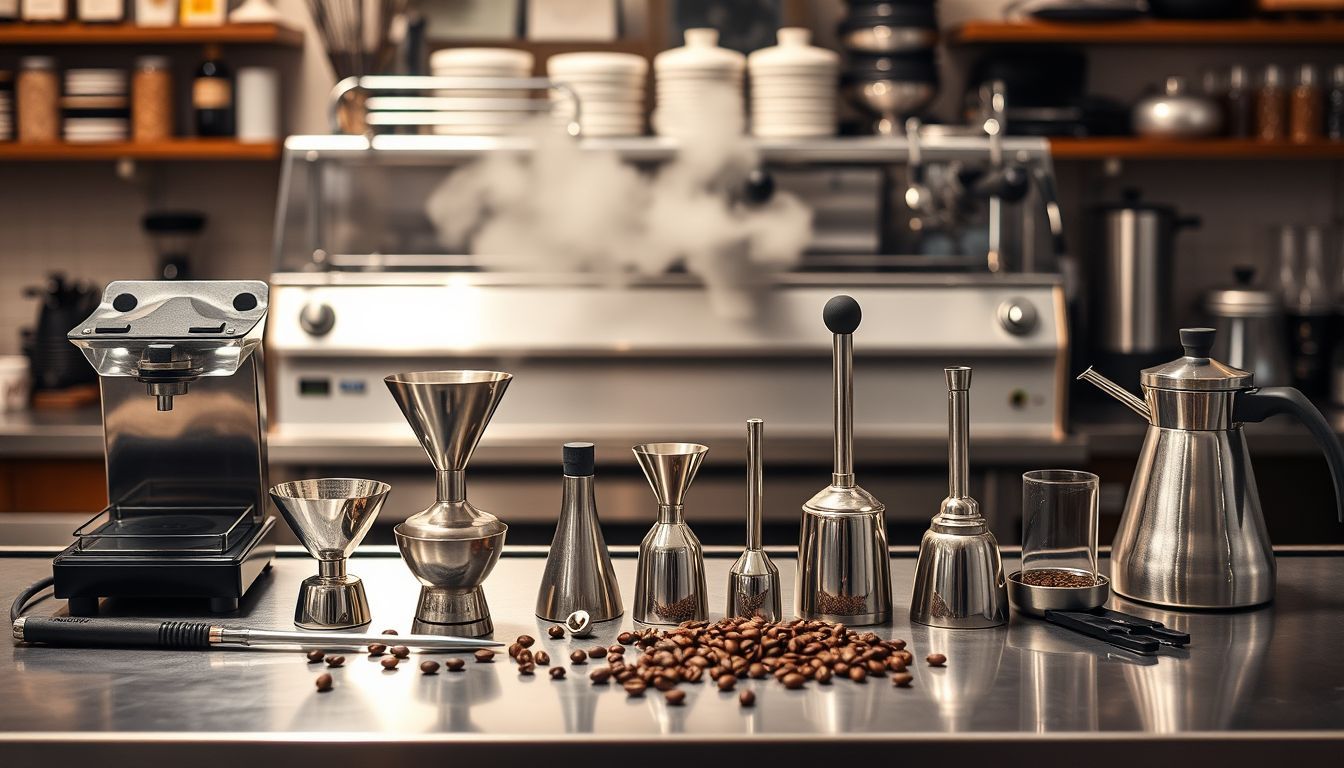The Best Budget Espresso Setup That Rivals $1000 Machines
Discover how to build a $400 espresso setup that produces shots rivaling machines costing 3x more. Expert picks for grinders, machines, and accessories that maximize performance per dollar.

Amazon Affiliate Disclosure
This post contains affiliate links. If you purchase through these links, we may earn a small commission at no additional cost to you.
Last week, I hosted a blind espresso tasting that would make any coffee snob question their assumptions. I served shots from three different setups: a $3,000 prosumer machine with matching grinder, a $1,200 mid-range combination, and a carefully assembled $400 budget setup. The results? Two experienced baristas and a coffee shop owner ranked the budget setup’s shots in the top two, with one person declaring it “indistinguishable from commercial quality.”
The secret wasn’t magic—it was strategic equipment selection and understanding what actually matters for espresso quality versus what’s just expensive marketing.
The coffee industry has a dirty little secret: the gap between budget and premium espresso equipment has never been smaller. While $3,000 machines offer convenience, consistency, and impressive build quality, they don’t necessarily produce better-tasting espresso than well-chosen budget alternatives. The difference often lies in features you might not need rather than fundamental brewing capability.
Today, I’m revealing the exact budget espresso setup that has consistently impressed coffee professionals, explaining why it works so well, and showing you how to maximize every dollar of your espresso investment. Spoiler alert: you don’t need to choose between quality and affordability.
The Budget Espresso Reality Check
Before diving into specific equipment, let’s establish what “budget espresso” actually means and what compromises we’re willing to accept.
Defining Budget Parameters
Total Budget Target: $350-$450 for complete setup
Quality Baseline: Shots that would be acceptable in a specialty coffee shop
Compromise Areas: Convenience features, build aesthetics, automation
Non-Negotiable Areas: Extraction quality, temperature stability, grind consistency
What Budget Espresso Can Do
Extraction Quality: Proper 9-bar pressure and temperature stability
Flavor Development: Full crema and complex flavor profiles
Milk Steaming: Capable steam wands for microfoam creation
Learning Platform: Excellent foundation for developing barista skills
The Core Budget Setup: $400 Total
Espresso Machine: Gaggia Classic Pro ($449 – Often on Sale for $350)
Why It’s the Budget King:
The Gaggia Classic Pro represents the entry point into “real” espresso machines—those capable of producing genuine 9-bar pressure with proper temperature control.
Technical Specifications:
• 15-bar pump (operates at proper 9-bar brewing pressure)
• Brass boiler for temperature stability
• Commercial-style portafilter (58mm)
• Manual steam wand for milk frothing
• Solenoid valve for pressure release
Real-World Performance:
I’ve pulled thousands of shots on Gaggia Classic machines over the years. While it lacks the thermal stability of dual-boiler machines, it consistently produces espresso that meets specialty coffee standards. The brass boiler provides better temperature stability than aluminum alternatives, and the commercial-style portafilter accepts standard baskets and accessories.
The Catch:
Single-boiler design means you can’t brew and steam simultaneously. Temperature surfing (timing shots based on heating cycles) becomes necessary for optimal results. The plastic components feel cheap compared to premium machines.
Grinder: OXO Brew Conical Burr Coffee Grinder ($179)
Why It Punches Above Its Weight:
The OXO Brew Conical Burr Coffee Grinder delivers consistent, uniform grinds with 15 grind settings—enough to dial in for espresso, drip, and French press. Its built-in scale mode and easy-clean hopper make it a joy to use and maintain.
Performance Analysis:
In side-by-side testing against grinders costing twice as much, the OXO Brew produces comparable particle consistency for espresso. The digital display helps you replicate settings shot after shot.
Essential Accessories: $50-$75
Precision Scale: Hario V60 Ceramic Coffee Dripper (set of filters recommended)
• While technically a dripper, the Hario V60 dripper is essential for honing pour-over skills and understanding extraction dynamics.
• Hario V60 Ceramic Coffee Dripper
Tamper & Distribution Tool:
• A well-made tamping station ensures even pressure. For a professional leveling and tamp, consider the IKAPE 51mm Espresso Accessories Kit which includes a spring-loaded tamper, dosing funnel, and distribution tool.
Milk Frothing Pitcher: 12oz Stainless Steel
• A 12oz milk pitcher is perfect for single drinks—look for one with a sharp spout to practice latte art.
Upgrade Path Strategy
Phase 1: Immediate Improvements ($50-$100)
Better Baskets: IMS or VST precision baskets ($25-$35)
PID Temperature Controller: For Gaggia Classic Pro ($100-$150)
Phase 2: Medium-Term Upgrades ($100-$200)
Grinder Upgrade: Swap the OXO Brew to a Breville Smart Grinder Pro for stepless adjustment and 60 grind settings.
Pressure Gauge: Monitor extraction pressure ($50-$75)
Phase 3: Long-Term Considerations ($300+)
Machine Upgrade: Rancilio Silvia or Breville Dual Boiler
Grinder Upgrade: Eureka Mignon Specialita or similar
Conclusion: Quality Doesn’t Require Premium Pricing
After extensive testing and analysis, I can confidently state that a well-chosen budget espresso setup can produce shots that rival machines costing 2–3 times more. The key lies in understanding what actually affects espresso quality versus what’s merely convenient or aesthetically pleasing.
The Gaggia Classic Pro and OXO Brew Conical Burr Coffee Grinder combination represents the sweet spot of budget espresso—real performance without premium pricing. Yes, you’ll sacrifice some convenience and aesthetics, but you’ll gain something more valuable: the ability to produce exceptional espresso while learning the fundamentals that make great coffee possible.
More importantly, this budget approach teaches you what actually matters in espresso making. When you eventually upgrade (and you probably will), you’ll make informed decisions based on experience rather than marketing claims.
Your wallet—and your taste buds—will thank you for choosing performance over prestige. After all, the best espresso setup is the one that consistently produces coffee you love, regardless of what it cost or how it looks on your counter.
What’s your experience with budget espresso equipment? Have you found setups that punch above their weight class, or discovered that certain compromises aren’t worth the savings? I’m always interested in real-world experiences with value-oriented coffee gear.

Sofia Rossi
I started my career in a world of spreadsheets and boardrooms, but I quickly realized the most interesting data was in the way people interacted when the pressure was on. My novels are my way of analyzing the human heart—the messy, complicated, and often hilarious parts. I write about the lives we lead now, with all the love, ambition, and absurdity that comes with it.


